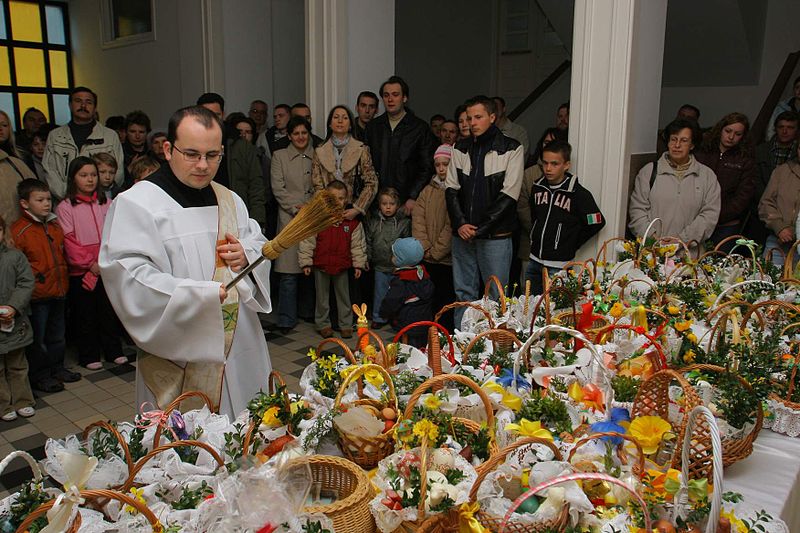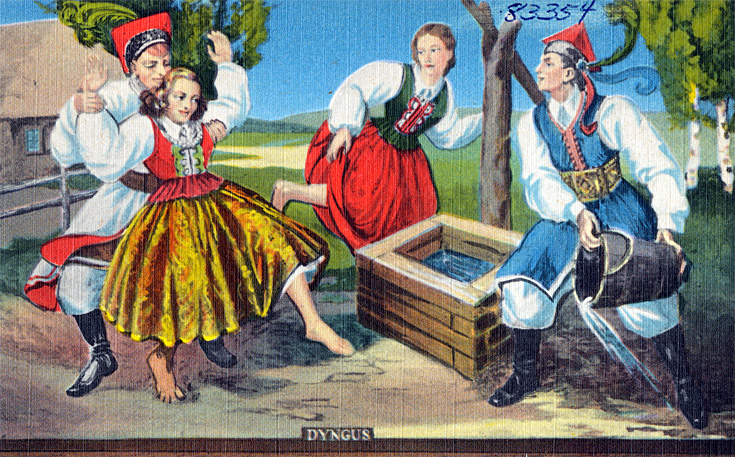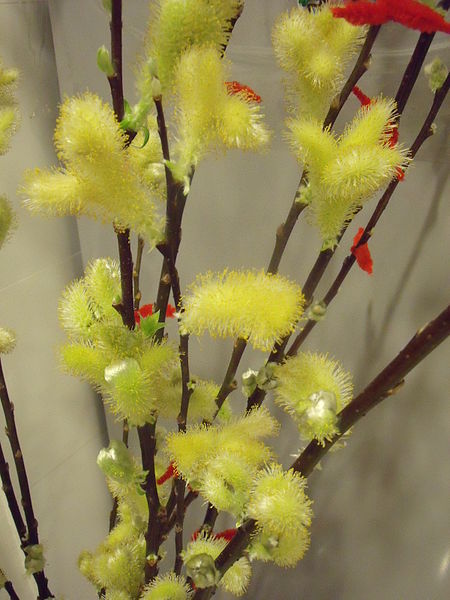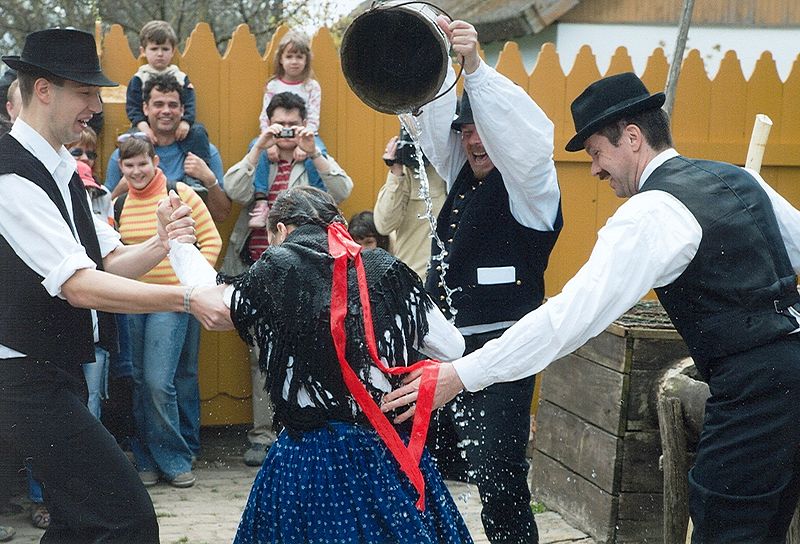
Author: Błażej Benisz via Wikipedia Commons Deacon blessing the Easter food (Święconka), Ołtarzew, Poland 2007
Today’s blog post is taking up the topic of my last blog post, and is keeping us in Poland and in Eastern Europe for a little while longer.
Easter is an important holiday in Poland and a popular Polish Easter tradition is the ‘blessing of the Easter baskets’, or Święconka [ɕvʲɛnˈtsɔnka], on Easter or Holy Saturday. Baskets lined with a white linen or a lace or embroidered napkin are decorated with evergreen twigs of bukszpan (boxwood) and ribbons, and filled with a selection of Easter foods and are then taken to church to be blessed.
The foods in the basket all have a special symbolic meaning:
- chleb (bread), symbolizing Jesus
- jaja (eggs) [jaja na twardo barwione w łupinkach cebuli = hard-boiled eggs dyed in onion skins] , symbolizing Christ’s resurrection
- kiełbasę (sausage) or ham, symbolizing abundance
- sól i pieprz (salt and pepper), symbolizing purification
- owieczka (a lamb), either as a figurine or as a cake or bread in lamb-shape, symbolizing Christ
- chrzan (horseradish), symbolizing the bitter sacrifice of Christ
Depending on the parish, the baskets are either lined up on tables or taken to the front of the altar in a procession of the parishioners. The priest or deacon then sprinkles the baskets with holy water, using either a straw brush or a metal aspergillum (i.e. a liturgical sprinkling wand). Special prayers addressing the various contents of the baskets, i.e. the eggs, cakes, meat, etc., are said. Traditionally, the blessed food remains untouched either until Saturday afternoon or Sunday morning.
The Christian custom of Easter eggs has a long history, reaching as far back as ancient Mesopotamia, where early Christians stained eggs red in memory of the blood shed by Christ at his crucifixion. The Church officially adopted this custom, and eggs came to symbolize the resurrection of Christ: The hard egg shell symbolizes the sealed Tomb of Christ, which, when cracked open, symbolizes Christ’s resurrection from the dead and the empty tomb left behind. Another interpretation sees the egg as being dormant, while containing seed for new life and renewal.
- Author: Frka, via Wikipedia Commons Croatian Easter basket
- Author: Ejdzej, via Wikipedia Commons Polish święconka
The custom of Easter baskets is also observed in some other Slavic countries, like Croatia.
Is there a similar custom in your country or region? Tell us about it in the comments! 🙂





